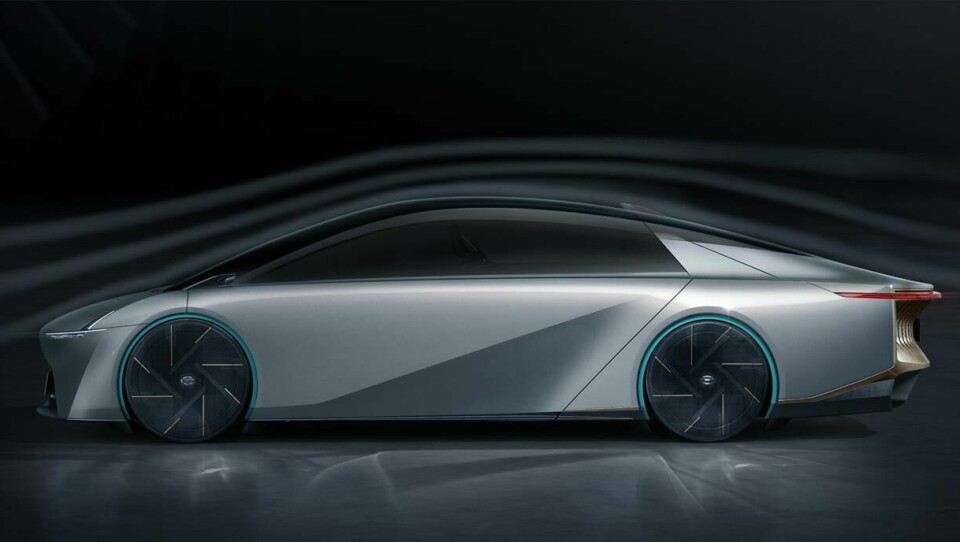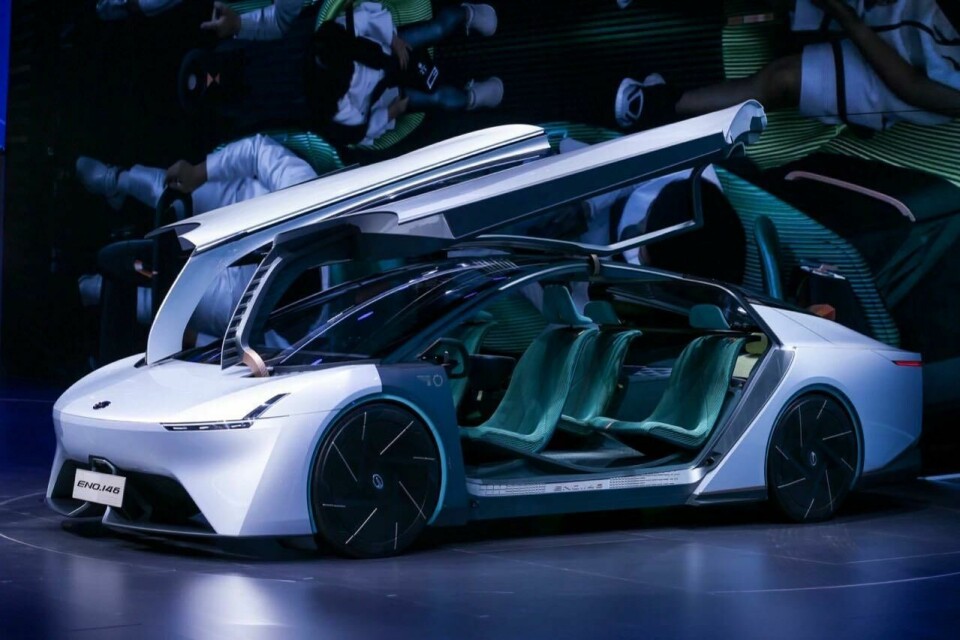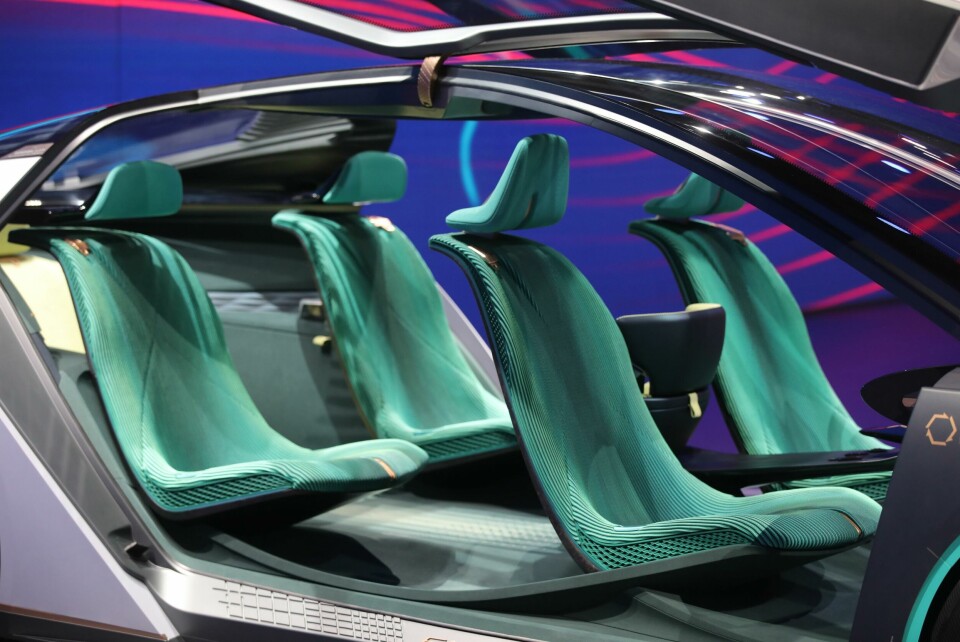
First Sight: GAC’s record breaking ENO.146 concept
Understanding the super slippery six-seater fastback
On the opening morning of the Guangzhou Auto Show, an EV carrying six people drove out onto the stage of the GAC stand. Whilst EVs were two a penny at the 2019 show, this car was different; firstly, although it’s a concept, it is a working one, and secondly it is a record breaker. The numbers in the concept’s ENO.146 name tell the story – this is the car’s drag coefficient, making it the world’s most aerodynamic passenger electric vehicle.
“Recently in the automotive world, there are a lot of show cars coming out but most of them are targeted on the topic of CASE (connected autonomous shared and services electric) – however, most of them stay at the idea phase and you will also notice that all of them are becoming too similar. Especially when it comes to autonomous driving – eventually the car will become a box with four seats inside,” began Zhang Fan, GAC’s vice president of R&D.
With the big government push towards EVs in China, GAC wanted to create a concept that was very much a product of the China context, not only in design but performance, too. “Nowadays, everyone is talking about mileage and how to resolve this mileage problem. One way is to add more batteries, but this means more weight, which means more energy consumption – it becomes a bad loop. Another way is to establish as many charging stations as possible, but that doesn’t happen in one day. So, what is a way to really improve the efficiency of EVs? Aerodynamics,” exclaimed Zhang. Nearby on the GAC stand is the Aion LX, an SUV with a NEDC range of 650km. The ENO.146 uses the same battery pack and motor, yet calculations put the range with six passengers at 1000km, despite the car being just shy of 5.5 metres in length.
‘Innovation’ and ‘experience’ are two key brand pillars of the GAC Group, and which they aimed to encapsulate in a concept for the Guangzhou Auto Show. GAC decided that the optimum way for the brand to gain credibility for innovation was by being the best at something. Research showed the company could truly innovate by developing the most aerodynamic EV passenger concept ever, while in parallel creating a human centric interior experience.
A key element of the design process was that both engineering and design worked closely together from the initial phases with input coming from GAC’s design studios in Guangzhou, Shanghai and Los Angeles. Aero engineers helped with computer visual simulations and with the testing of clay models in wind tunnels. To achieve the record, GAC needed to better the Cd value of 0.19 achieved by the Mercedes Concept IAA in 2015 and set a target of 0.18. With the resultant 0.146, GAC well and truly bettered it.
Zhang walked us around the car, pointing out some of the ways that GAC achieved the result and some of the design language of the concept. “How did we achieve this fantastic result? First of all it is very aero optimised,” said Zhang. To an extent, the front of the car mimics an aerofoil – the most efficient shape for passing through air. Like a racing car, it has a tunnel channelling air through from the front, the splitter plate also creating clean airflow towards the rear diffuser and aiding underbody stability.
Along the bodyside, it is very clean with just one distinctive bodyline which kicks up towards the sharkfin rear pillar. GAC calls the design language on the ENO.146 ‘Vector Energy’. This EV design language likely showcases some of themes that will make their way into forthcoming Aion models. However Zhang cautioned: “With the front end we tried to create something very simple but very powerful. I think it is a good example of where we could be going. But there is a danger in it – when you are doing something super clean it is very easy to be copied and for it to be similar to others. Especially for EVs, everyone is trying something super clean.” He went on to mention that the kicking line is something that they could play with on future production cars.
Housed in a side ‘utility belt’ are the door-opening buttons, cameras which replace mirrors, and RGB lighting strips. Currently in China, as with most jurisdictions, cameras cannot legally be used on road cars instead of wing mirrors. Obviously though, replacing the mirrors has an aerodynamic advantage. “This is something that could be changed in the next few years as long as you come up with a reliable solution. It needs to be proved in production by the OEM and also to the relevant government agencies and bureaus,” commented Zhang.
“Normally when you talk about aerodynamics people automatically think of some sort of organic teardrop shape. We don’t want to go that way, instead we want to give some new interpretation to bring new aesthetics or form language to the aero shape. Therefore we took the inspiration from modern architecture, and even some digital design,” explains Zhang.

A unique feature of the car is the HUG (Halo Utility Gear) system housed in the wheel wells. As the car picks up speed, these extend as a skirt to close up the gap between the wheel arch and tyre. On the ENO.146 these are green, contrasting with the rest of the body colour. Although this hugely increases aerodynamic efficiency, even without them the car still achieves 0.168Cd. They can only be deployed at speed, because they restrict wheel movement and so suit the limited driving inputs experienced when on the highway – plus, like any aerodynamic effect, they’ll make a bigger difference at higher speeds.
“If you just designed the car for aerodynamics it would look very odd, so we tried to incorporate a new form language,” said Zhang, mentioning that the tail is so long largely due to the airflow requirements, and in the design this is complimented by the sharply tapering DLO at the back. One element where digital design comes in is with the parametric pattern at the rear, which apart from the top lip holds no aerodynamic function. Part of the inspiration comes from the thrust vectoring nozzle of a fighter jet engine.

Inside the ENO.146 has an unusual 2 + 1 + 2 + 1 seating layout. “It is a very good layout to reflect a now typical Chinese, three-generation, two-kid family image. This is really related to people’s everyday lives,” explained Zhang. The first two seats are for a driver and passenger. Next comes a baby seat for a child of around two. There are then another two seats for adult passengers. Here David Hilton, Director of GAC Advanced Design Shanghai, was keen to point out that they could easily have cheated but didn’t. “Adults can sit in those seats comfortably, we could have tapered the roof more and achieved an even better result but we wanted it to be real,” he said.
The final seat is for the teenager. “It’s not just a special position for the seat but it reflects how teenagers exist in the family. They’ve half grown up and have their own world. They don’t want to be included in the whole family but equally don’t want to be disconnected,” says Zhang. Along with the child seat, the teen seat is a much lighter, almost yellow shade of green compared to the other seats. Colour inspiration comes from a painting of a lotus plant – a very oriental symbol.
Stripes on the seats represent the leaves (the adults) and for the children they are the blossom of the family and so they carry the lighter colour. “The shiny black parts on the structure and the interface for the UI/UX, they come from the water. So you have the water, the leaves, the flowers,” explained Zhang. “It makes a perfect picture.”
















































